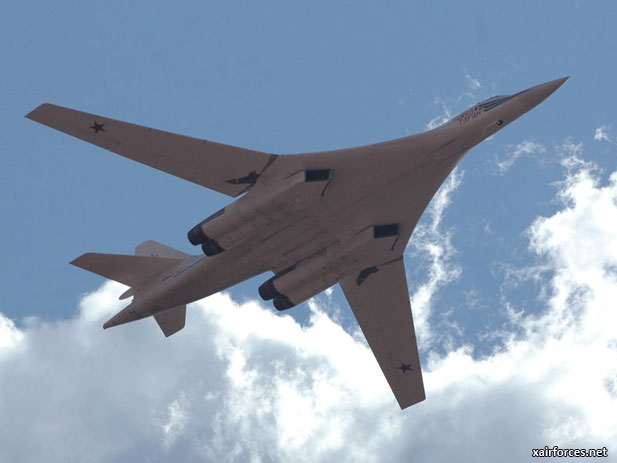
Russia Develops Requirements for Future Long-range Bomber

Russia is developing requirements for its Future Aviation Complex for Long-Range Aviation (PAK DA) next-generation bomber, according to air force commander Gen. Victor Bondarev.
“The defense ministry is working on a complete range of requirements for the PAK DA, and after these are firmed up the industry will be able to complete the technical [design] of this aircraft,” Bondarev told reporters at the Russian air force centennial celebration earlier this month at Zhukovsky airbase near Moscow.
The PAK DA bomber would supplement and partially replace the Tu-160s, Tu-95MSs and Tu-22M3s in service with the long-range aviation establishment in charge of Russia’s land-based strategic bomber aircraft. Russia plans to fly the PAK DA in 2022, said Gen. Anatoly Zhikharev, commander of the strategic bomber force. A basic design has been completed and accepted, and industry is beginning full-scale research and development of the aircraft.
A first-phase modernization and upgrade of the current fleet of Tupolev bombers will extend their service lives, by up to 30 years in the case of the Tu-160. Ten of the swing-wing, supersonic Tu-160s will undergo a second phase of modernization starting in 2016. “This will turn it into a completely different airplane, with new instruments and avionics,” Zhikharev said.
By year-end, four Tu-22M3s will be outfitted with the SVP-24-22 avionics suite already in use on Sukhoi Su-24M front-line bombers and tested on a Tu-22M3. The ministry of defense has awarded contracts for the work to the Gefest ET avionics development company in Zhukovsky. The upgrade improves the accuracy of navigation and strike systems, and allows operations into airfields lacking glideslope guidance. Earlier this year, the air force said it intends to upgrade about 30 Tu-22M3s during the next eight years. Reportedly, between 50 and 60 of these “Eurostrategic” strike aircraft remain airworthy.
The Red Star, the official publication of the Russian defense ministry, reports that all Tu-160 commanders are flying more than 100 hours a year; Tu-95 crews are logging twice that amount; and some Tu-22M3 commanders are flying more than 300 hours a year. The newly released figures provide evidence that the country’s long-range aircraft are flying considerably more than in the past.
Source: By Vladimir Karnozov - AINONLINE News - 29 August 2012
Photo: The next-generation PAK DA bomber is intended to supplement and partially replace the Russian air force Tupolev Tu-160, seen here at the service’s 100th anniversary celebration. (Photo by Vladimir Karnozov)
(29.08.2012)
|